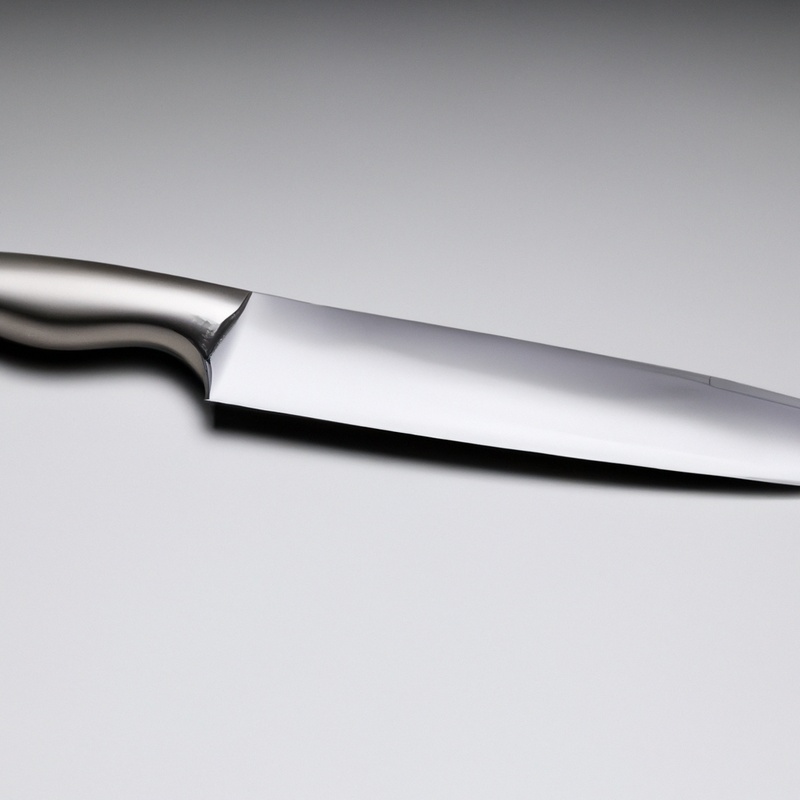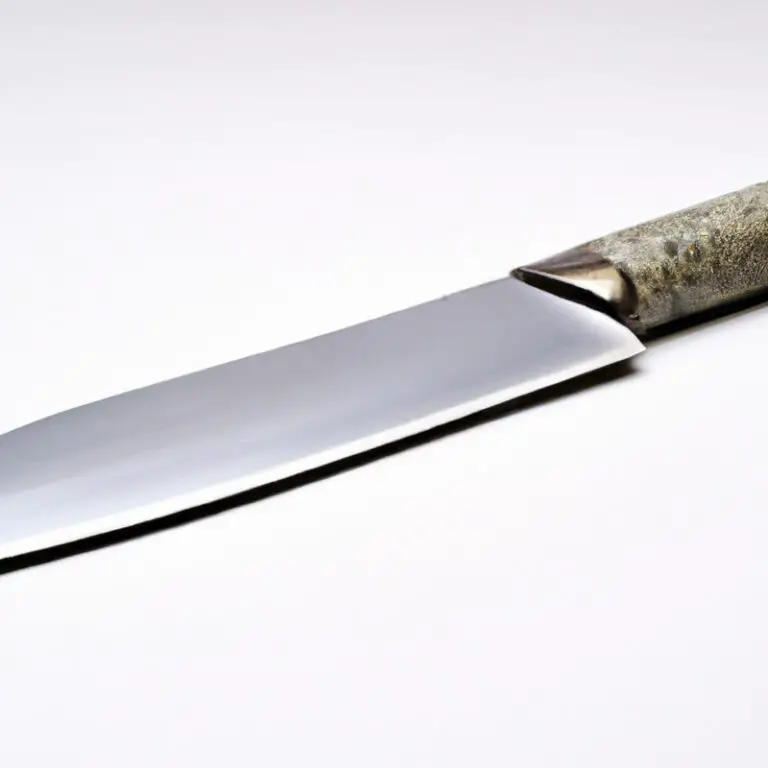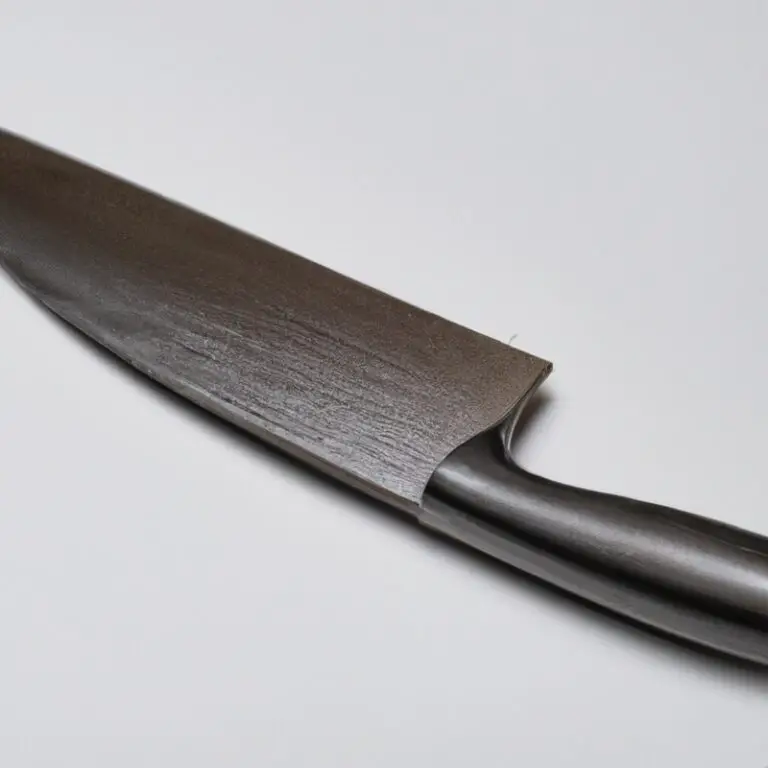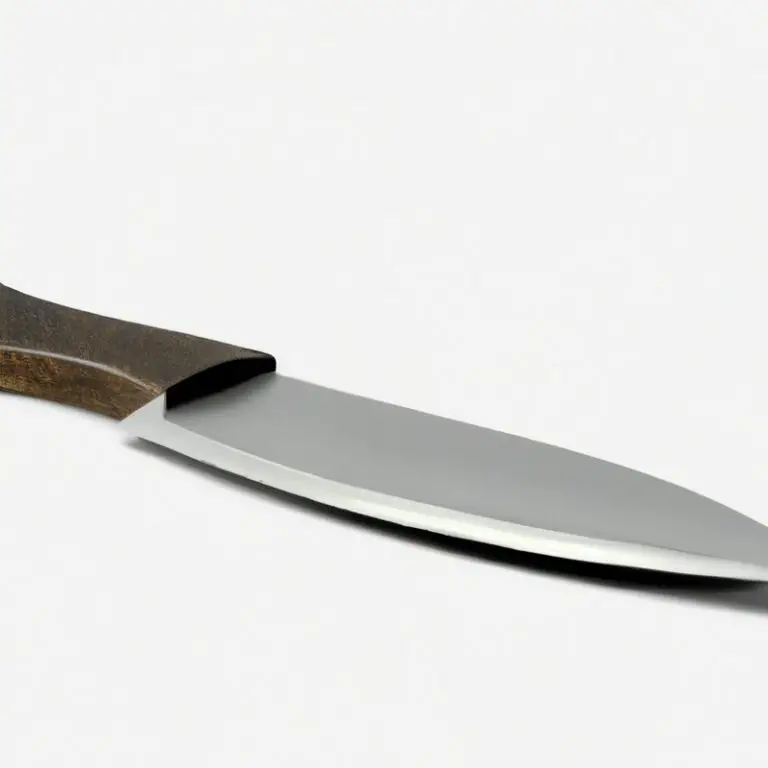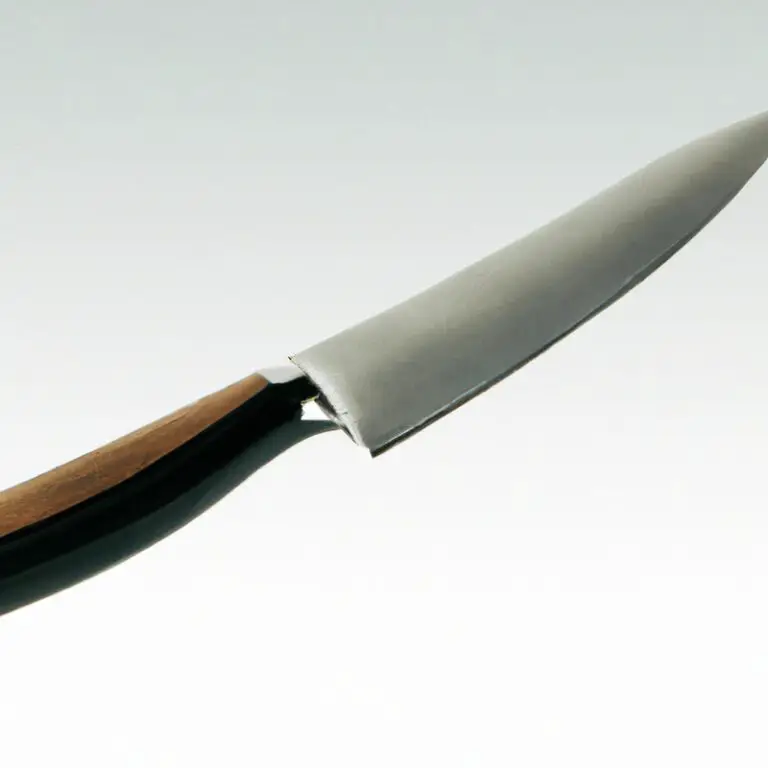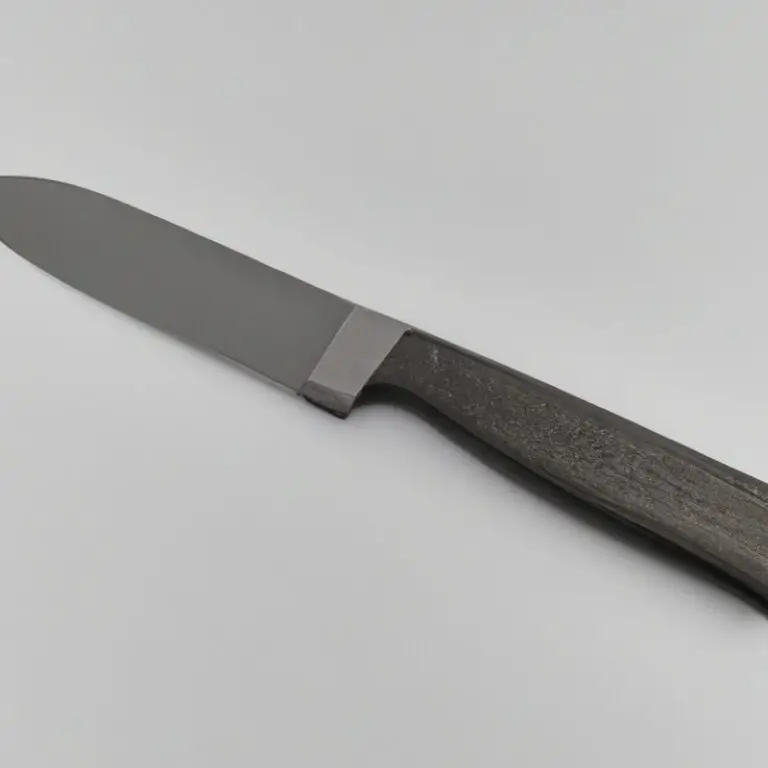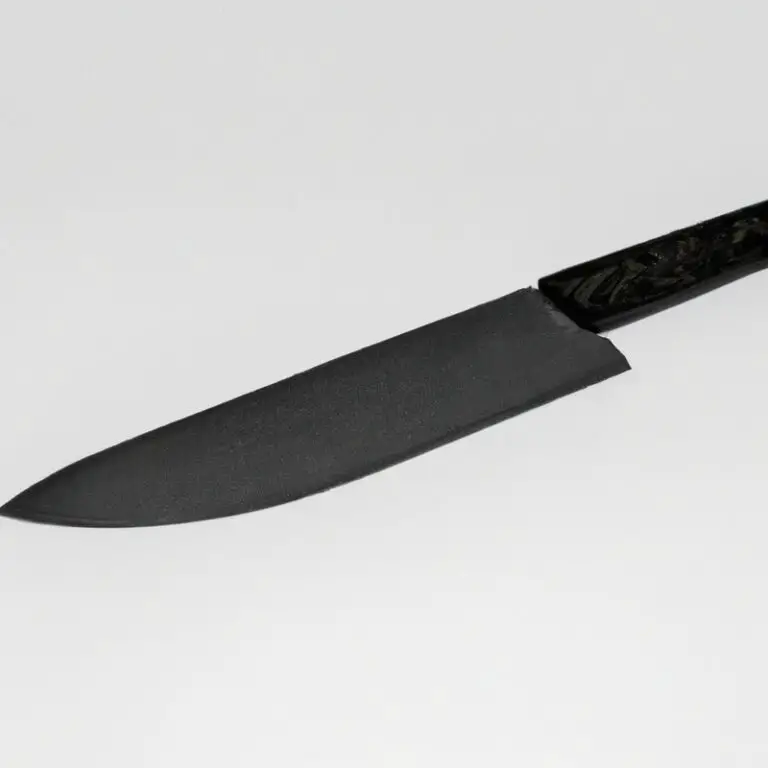How To Avoid Food Sticking To The Side Of a Gyuto Knife During Cutting? – Tips
Key Takeaways:
- Keep the blade clean and dry to prevent food from sticking to the side of the knife.
- Use a proper cutting technique by applying minimal pressure and using a rocking motion.
- Consider the type of food being cut and adjust accordingly, such as using a thinner blade for delicate items.
- Invest in a high-quality Gyuto knife with a non-stick coating for easier food release.
Picture this: you’re preparing a beautiful dish, but before you know it, food is sticking to the side of your Gyuto knife, causing a mess and ruining the meal. If you can relate to this common kitchen issue, don’t worry, you’re not alone.
That’s why we’re here to help with some tips and tricks on how to avoid food sticking to your knife during cutting.
From choosing the right cutting board to mastering proper cutting techniques and maintenance, we’ve got all the expert advice you need to keep your Gyuto knife in top condition and your meals flawless.
| Method | Explanation |
|---|---|
| Sharpen the edge of the knife | A sharp knife will glide through the food, giving it less of a chance to stick to the sides. |
| Use a proper cutting technique | When cutting, use a “rocking” motion with the knife to create a fluid and continuous cutting motion. |
| Apply oil to the blade | Coating the blade with a thin layer of oil can reduce friction and prevent food from sticking to the sides of the knife. |
| Use a non-stick coating | A non-stick coating can prevent food from sticking to the blade in the first place. |
The importance of keeping your Gyuto knife clean and dry before use
It is crucial to keep your Gyuto knife clean and dry before use to prevent food from sticking to the blade. A dirty or wet knife will cause food to stick, making the cutting process difficult and unsafe.
A buildup of food residue can also result in bacteria growth, which can contaminate your food.
To ensure your Gyuto knife performs at its best, always clean and dry it thoroughly before use.
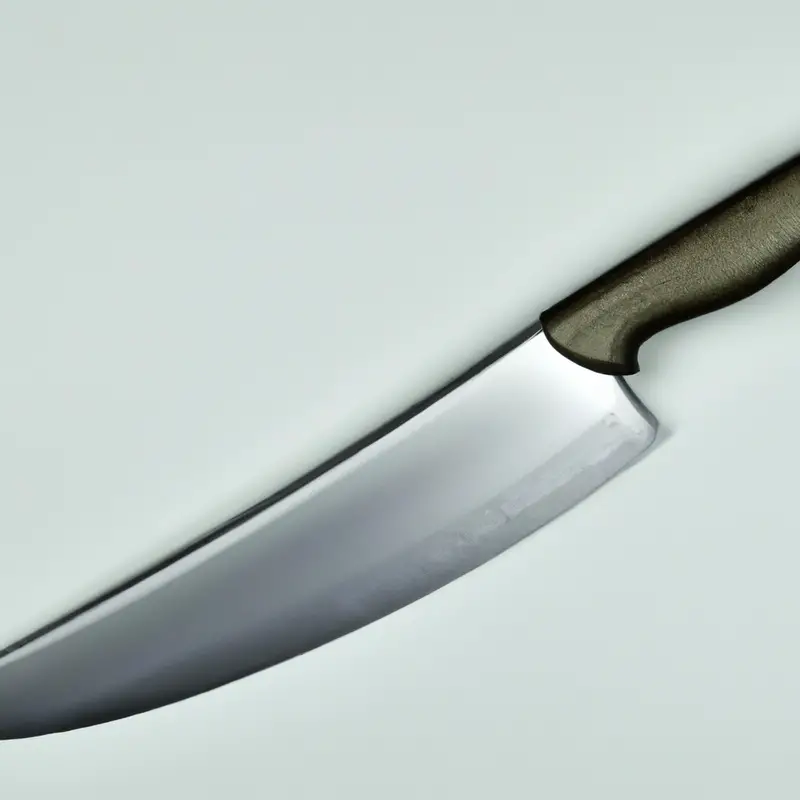
How choosing the right cutting board can prevent food from sticking to your knife
Choosing the right cutting board can play a key role in preventing food from sticking to your Gyuto knife. A good cutting board should be made of a material that’s gentle on your knife, while also preventing food from sticking to its surface.
Some of the best options include wood, bamboo, and plastic cutting boards.
Wood and bamboo boards are particularly helpful at preventing sticking because they have a slight natural grain that diffuses the suction between the board and the knife’s blade. Plastic boards can also work well, but make sure to choose one that’s made of high-density polyethylene.
Avoid using glass or ceramic cutting boards, as both can dull your knife and increase the likelihood of food sticking to it during use.
Additionally, make sure to clean your cutting board regularly and replace it when it becomes too worn or damaged. By choosing the right cutting board and regularly cleaning and maintaining it, you can help prevent food from sticking to your Gyuto knife and ensure that it remains sharp and effective for years to come.
Using the right cutting techniques to prevent food from sticking to the blade
Using the right cutting techniques is crucial to preventing food from sticking to the blade of your Gyuto knife. One key technique is to use a smooth and steady slicing motion, rather than hacking or chopping.
This allows the blade to cleanly cut through the food, rather than tearing or crushing it and creating more surface area for food to get stuck onto the blade.
It’s also important to use the correct cutting angle. A shallow angle will result in a blade that slides across the food instead of cutting cleanly through it, while a steep angle will result in a blade that digs into the food and causes it to stick.
Aim for a moderate cutting angle that allows the blade to make contact with the food without excessive pressure.
Another technique to prevent sticking is to allow the blade to do the work. Avoid pressing down too hard on the food, which can cause it to become flattened and stick to the blade.
Instead, use a gentle touch and let the sharpness of the blade do the cutting.
Finally, try using a rocking motion, which involves moving the blade back and forth in a gentle, rhythmic manner. This technique allows the blade to slice through the food without creating a lot of friction, which can cause food to stick to the blade.
By using these cutting techniques, you can reduce the likelihood of food sticking to the blade of your Gyuto knife, ensuring that your food is sliced cleanly and efficiently.
Why honing your Gyuto knife is crucial to avoiding food buildup on the blade
Honing your Gyuto knife is crucial to avoiding food buildup on the blade because it helps maintain the knife’s original sharpness. With use, the blade can become slightly bent or dull, causing food to stick to it.
Honing repairs micro-serrations on the blade’s edge, keeping it sharp and preventing food from sticking.
Experts recommend honing your Gyuto knife before every use, using a honing steel or a honing rod, and at an angle of approximately 20 degrees. Honing regularly will extend the life of your knife and keep it performing its best.
Using the correct amount of pressure when cutting different types of food
Using the correct amount of pressure when cutting different types of food is crucial to avoiding food buildup on the blade and preventing it from sticking. Soft foods such as tomatoes and bread should be cut with a gentle, slicing motion to avoid crushing them.
On the other hand, firmer foods like carrots and onions require some pressure to cut through them, but it’s important not to apply too much force that could damage the blade or cause the food to stick.
Using a rocking motion while cutting can also prevent food from sticking to the sides of the blade. It is essential to be mindful of the amount of pressure you apply while cutting different types of food to maintain the sharpness of your knife and prevent food from sticking.
Why using a rocking motion can prevent food from sticking to the sides of the blade
Using a rocking motion while cutting with a Gyuto knife can prevent food from sticking to the sides of the blade. This is because a rocking motion allows the blade to gently slice through the food, rather than pressing down and crushing it.
When the food is crushed, it can become squished between the blade and the cutting board, leading to more surface area for it to stick to the blade.
In contrast, a rocking motion uses a smooth, continuous slicing motion that helps to keep the food intact and reduces the risk of it sticking to the blade. Additionally, rocking the blade back and forth can help to create a natural rhythm that makes cutting more efficient and reduces the need for excessive pressure or force.
Overall, using a rocking motion is a simple and effective way to prevent food from sticking to the sides of your Gyuto knife and ensure that your cutting experience is smooth and effortless.
The benefits of using a non-stick coating on your Gyuto knife
A non-stick coating on your Gyuto knife has several benefits. It prevents food from sticking to the blade, ensuring that your slicing and chopping are smooth and consistent.
Moreover, it saves you time by reducing the amount of food buildup on the blade, minimizing the need for constant cleaning.
What’s more, a non-stick coating also makes the blade more resistant to corrosion and abrasion, adding to the knife’s lifespan. However, it’s vital to note that a non-stick coating is not a substitute for proper cleaning and maintenance practices.
For maximum benefits, invest in high-quality non-stick coated knives and follow the manufacturer’s instructions on care and usage.
Proper cleaning and maintenance steps to keep your knife in top condition and prevent food buildup
Proper cleaning and maintenance are essential to keep your Gyuto knife in top condition and prevent food buildup. Here are some steps you can follow:
- Wash the knife with warm water and mild soap immediately after use.
- Dry the knife thoroughly with a clean cloth to prevent rust or corrosion.
- Store the knife in a knife block or sheath to protect the blade.
- Avoid soaking the knife in water or putting it in a dishwasher as it can damage the blade.
- Regularly oil the knife to prevent rust and keep the blade in good shape.
- Use a honing rod to maintain the sharpness of the blade and realign the edge.
- Sharpen the knife with a whetstone or sharpening system when it becomes dull.
By following these steps, you can ensure that your Gyuto knife stays in excellent condition and avoid food buildup on the blade. Proper maintenance will not only prolong the life of your knife but also ensure that it performs optimally when cutting food.
How to choose the appropriate blade material to prevent food from sticking
When it comes to choosing the appropriate blade material to prevent food from sticking, there are two main options: stainless steel and high carbon steel. Stainless steel knives have a lower chance of rusting and are easier to maintain, but they tend to have a smoother surface that can make it harder to cut through some foods.
High carbon steel knives hold a sharper edge and are more durable, but they require more maintenance to prevent rusting.
Both options can be effective in preventing food from sticking, but personal preference and usage habits should be taken into consideration when making a decision.
The importance of proper sharpening techniques in keeping your Gyuto knife food-grade and preventing food from sticking
Proper sharpening techniques are essential in maintaining the food-grade quality of your Gyuto knife and preventing food from sticking to its blade. A dull blade can easily push and smush food instead of cutting it cleanly, causing food buildup and reducing your knife’s overall effectiveness.
A well-sharpened blade ensures a smooth and precise cut, minimizing food buildup and preventing cross-contamination.
Therefore, it is crucial to sharpen your Gyuto knife regularly, using the appropriate sharpening tools and techniques, to maintain its sharpness and integrity. A sharp knife not only makes your cutting tasks more efficient and enjoyable but also ensures the safety of your food.
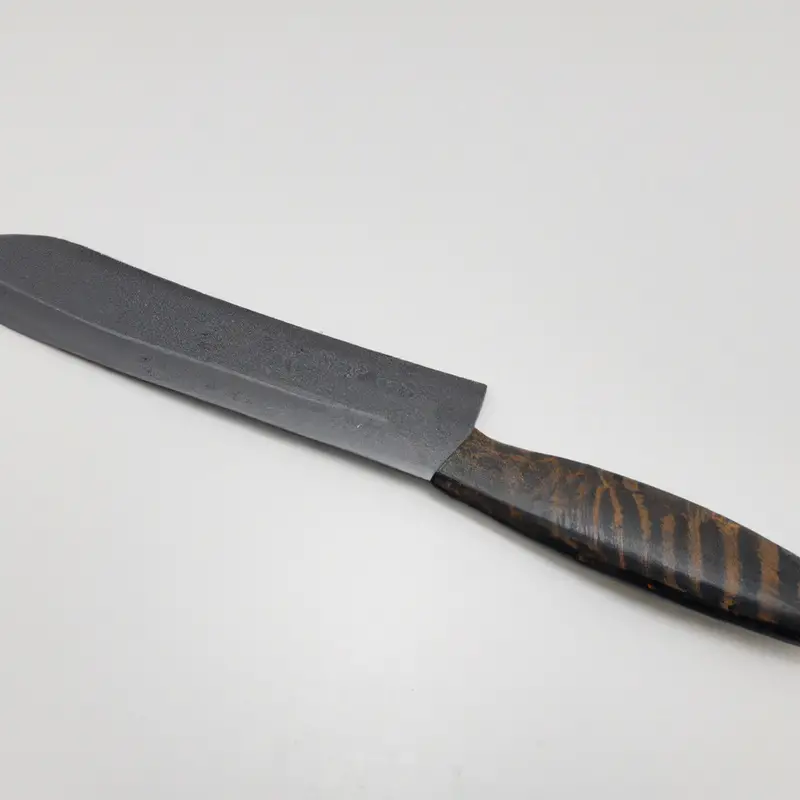
Final Verdict
Preventing food buildup on your Gyuto knife requires a combination of proper cutting techniques, blade maintenance, and material selection. By keeping your knife clean and dry, choosing the right cutting board, honing regularly, and using the correct amount of pressure and rocking motion when cutting, you can avoid food sticking to the blade.
Additionally, using non-stick coatings and selecting appropriate blade materials can further reduce the chances of food buildup.
Regular cleaning, maintenance, and sharpening are also critical to keeping your Gyuto knife in top condition and avoiding food contamination. By implementing these practical tips, you can ensure a smooth and efficient cutting experience, while also maintaining the highest level of food safety and hygiene.
So, next time you use your Gyuto knife, remember these useful insights to prevent food sticking and impress your guests with your expert cutting skills.

